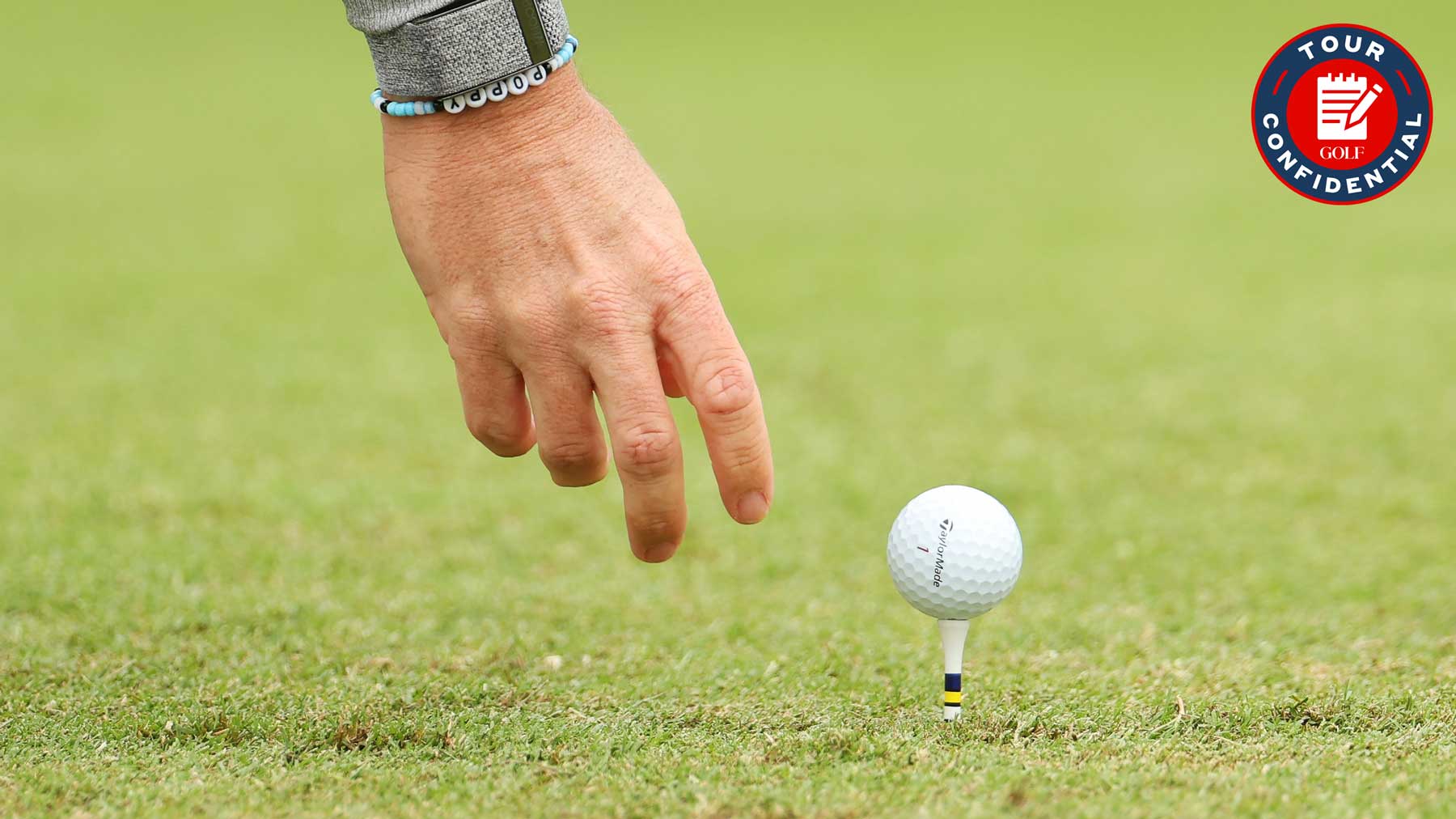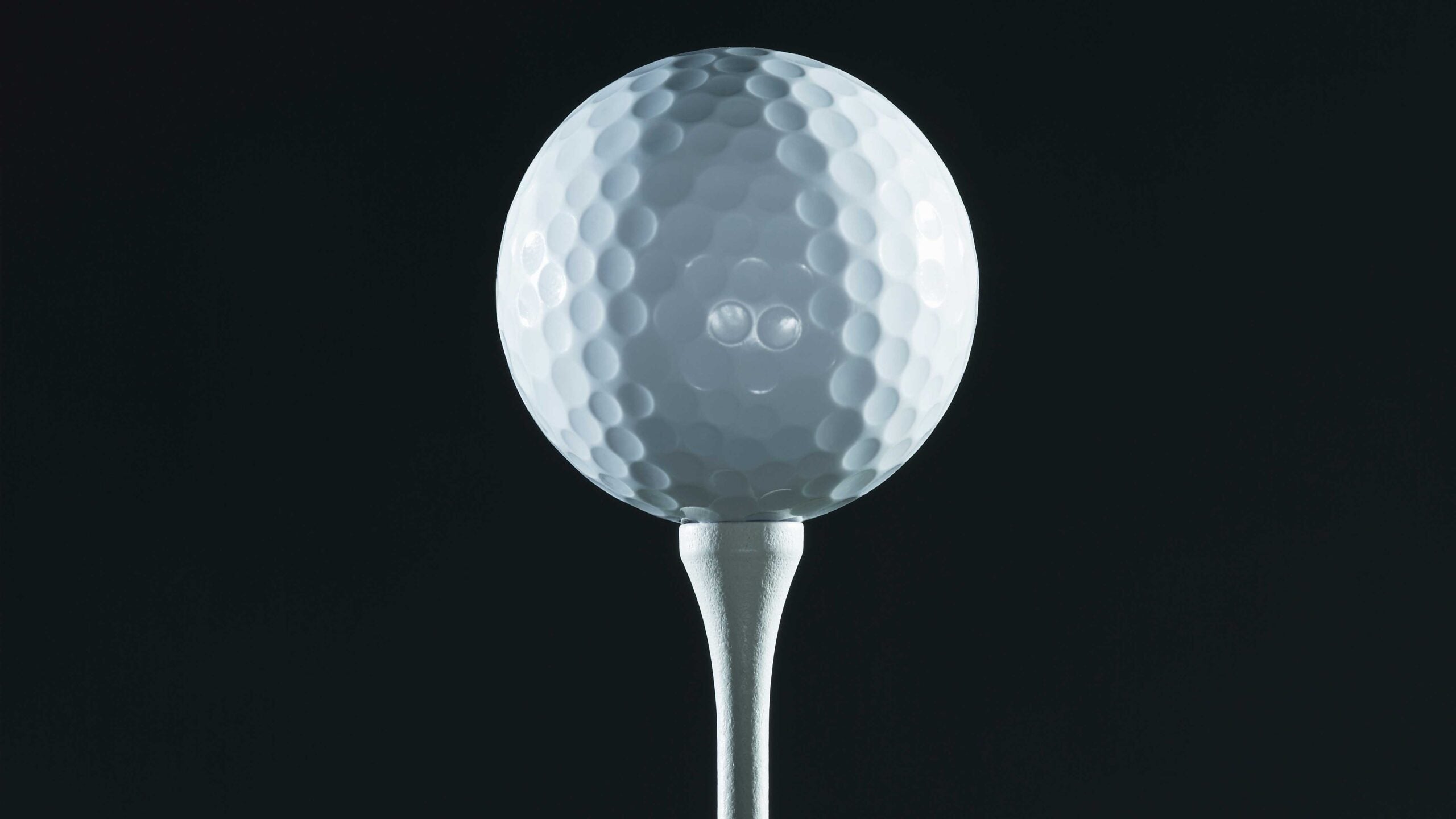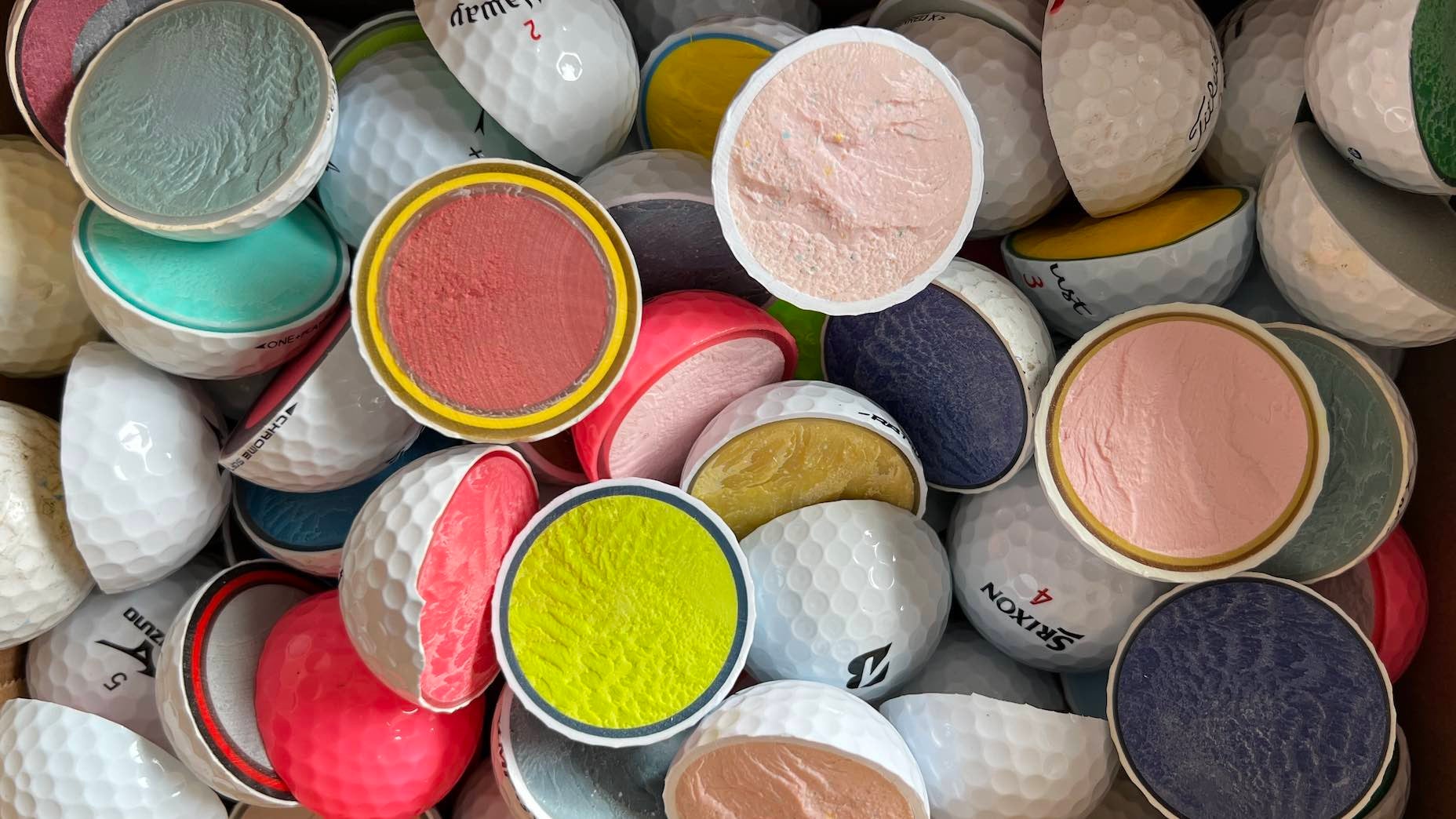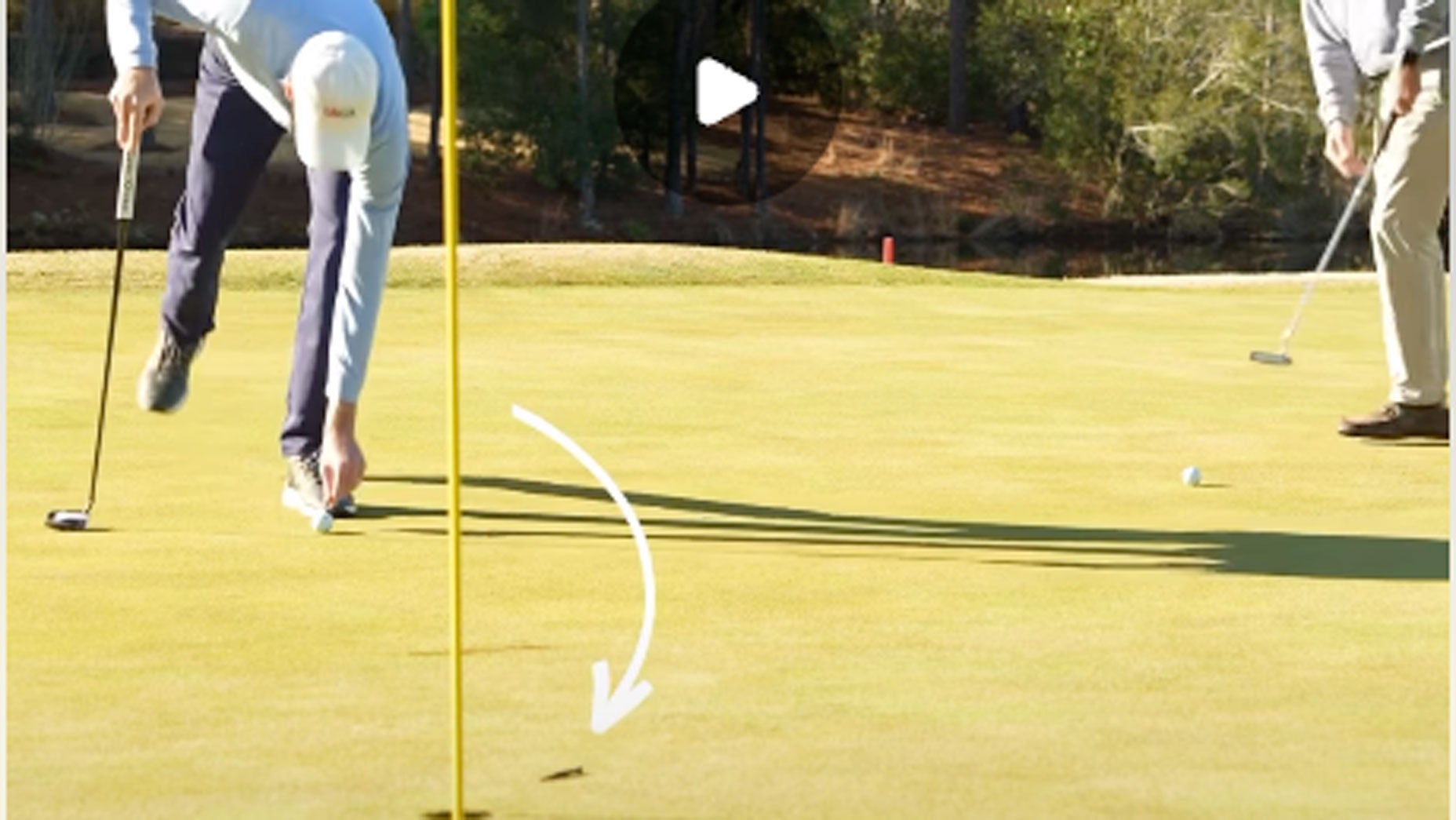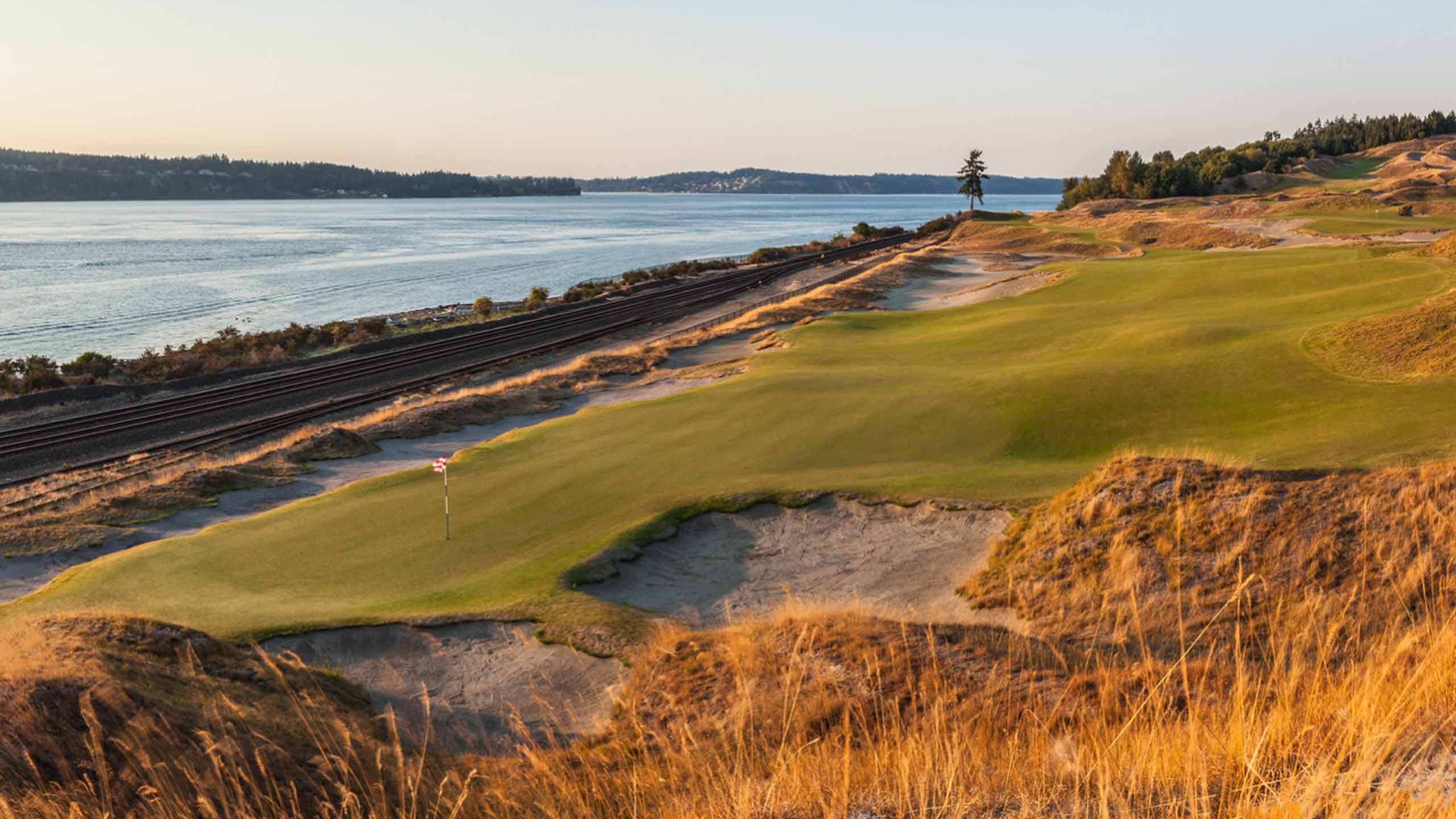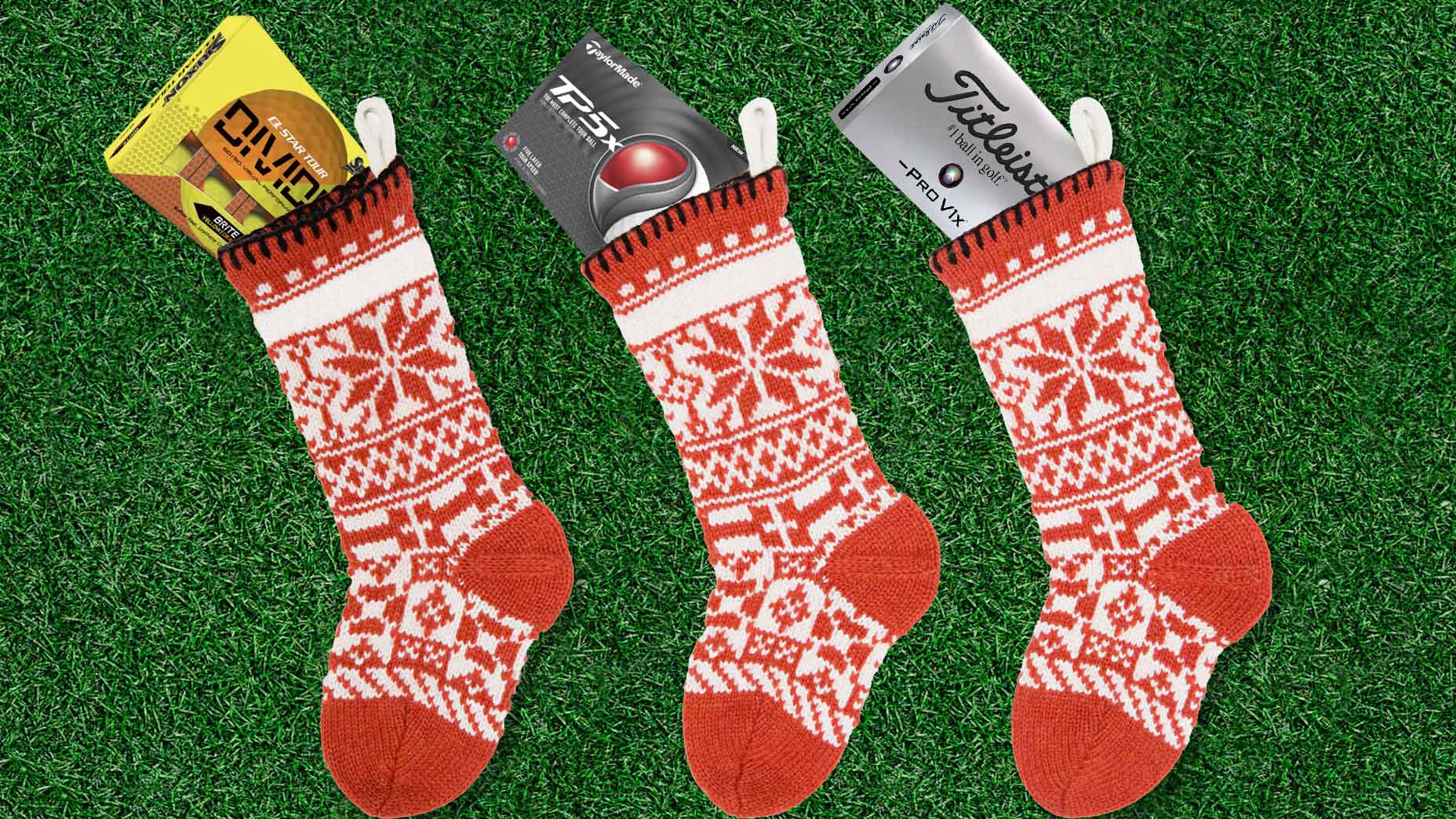Check in every week for the unfiltered opinions of our writers and editors as they break down the hottest topics in the sport, and join the conversation by tweeting us @golf_com. Today, we convened a special discussion to break down the potential ramifications of the USGA and R&A’s ball announcement.
The USGA and R&A announced Tuesday a proposal for a local rule, to be instituted as soon as 2026, that would, in effect, give organizers of “elite competitions” the option to require players to use a rolled-back ball. Good idea, bad idea or somewhere in between?
Josh Sens, senior writer (@joshsens): I think the analogy here is climate change. Not nearly as serious a problem as an eco-apocalypse, of course. But the parallels are there. We’ve known about the issue for a long, long time, but there was never much will to do anything about it. Addressing it fully now would require far more sweeping changes than what the governing bodies are proposing. But even these more modest changes are going to trigger serious resistance across the board, from big financial interests and individuals alike. The manufacturers aren’t apt to like them. And the fan at home who likes to see the long ball is going to gripe, “Hey, don’t yuck my yum,” much like the motorist who says, “Don’t tell me not to drive my Hummer to the supermarket.”
Dylan Dethier, senior writer (@dylan_dethier): To Josh’s analogy, I worry this change is the equivalent of banning plastic straws. Is there a real issue? Yes, of course! But the solution — changing elite players’ tee shots by 5% — feels like it won’t be drastic enough to make a significant difference but will be drastic enough to annoy and confuse people.
Golf-ball rules could dramatically change under new proposal. Here’s what we knowBy: Dylan Dethier , Jonathan Wall
Jack Hirsh, assistant editor (@JR_HIRSHey): The genie has been out of the bottle for too long. If golf wanted to do something about distance, it needed to do it BEFORE Tiger Woods came out on Tour. It’s far too late now for a rolled-back ball, and it’s going to affect way more people than golf’s governors intend.
Ryan Barath, senior editor, equipment (@rdsbarath): This is a good thing, and I’m happy to see golf’s ruling bodies willing to make a change. I would be willing to go as far as to say they should make it a top-to-bottom change and prevent the rules from being different for elite players. But having seen enough recreational golfers struggle, this is a great start.
Jonathan Wall, managing editor (@jonathanrwall): I think the USGA and R&A’s intentions are coming from a good place. But as many of many colleagues have already stated, the proposed changes don’t seem drastic enough and feel like they’re coming about two decades too late. As Mike Whan said Tuesday, golf’s minders are fully prepared to see distances return to where they currently are in about 12-15 years. At that point, another rollback will be needed. It’s essentially a Band-Aid. It’s a good idea, provided everyone (tours and manufacturers) gets on board, and they’re able to flesh out some of the initial proposals. I’m cautiously optimistic this could work.
Jessica Marksbury, multimedia editor (@:jess_marksbury): I think it’s somewhere in between. My colleagues have all made good points. I guess I wonder how many people are *truly* bothered by the distance top-level pros are hitting the ball. Bifurcation seems like an intense shake-up for a minimal gain — or, I guess I should say, loss. I understand the desire to protect golf’s records, history and course integrity. But length certainly isn’t the only thing that makes golf challenging.
Hirsh: Totally agree, JMar! I think most people loved when Bryson DeChambeau tried to drive the green on a par-5. And length definitely is not golf’s only defense. Pebble Beach plays under 7,000 yards for the Pro-Am and just over that number for U.S. Opens. Would anyone argue that it wasn’t a spectacular test in 2019? You can make a shorter course challenging without “tricking it up.” Maybe we need to put the onus on architects here.
So many questions to ponder! First up, will the PGA Tour adopt the rule? In a statement Tuesday, the Tour said, in part, “We will continue our own extensive independent analysis of the topic and will collaborate with the USGA and The R&A, along with our membership and industry partners, to evaluate and provide feedback on this proposal. The TOUR remains committed to ensuring any future solutions identified benefit the game as a whole, without negatively impacting the TOUR, its players or our fans’ enjoyment of our sport.” What’s your read? Will the Tour fall in line?
Hirsh: I think we need to hear from more players. The decision is ultimately up to them, but it sounds like none of them want to hit the ball shorter. I say no.
Sens: In a word, no, not when more immediate financial interests would appear to favor the status quo.
How would golf-ball manufacturers make a shorter ball, anyway? Here are 3 waysBy: Ryan Barath
Dethier: Early feedback hasn’t been great. But there are three years between now and implementation — something could give. The USGA could modify its proposal. The Tour could find some halfway point. But incentives favor the status quo, to Sens’ point. Tour pros don’t want a big change when they’ve optimized to get here. This will also complicate the marketing engine that connects pros to ams; if you’re using a different ball, that connection disappears. The USGA is taking a risk here, because potential rejection from top Tours could create a power struggle that nobody would win.
Barath: At the end of the day, I think you might hear some grumbling, but the PGA Tour and its players are going to fall in line with the rule changes. As a whole, golf is still much bigger than the PGA Tour, and if two of golf’s majors are going to be played under certain equipment parameters, the Tour will follow suit — especially if Augusta National quickly sides with the governing bodies.
Wall: With two-plus years to get the PGA Tour on board, I think there’s a good chance we see them fall in line. It would still be intriguing if only the U.S. Open and Open Championship adopted the MLR golf ball, but you need complete buy-in from the tours to legitimize the current proposal.
Marksbury: That’s interesting to think about, Jonathan. I could see this rolling out for just USGA and R&A championships. Or maybe there could be some kind of calculation to discern if a given course could benefit from implementing the rule. It would be super-fun to see some iconic, old-school courses that were perhaps once considered obsolete because they are “too short” to challenge the pros as hosts of future tournaments. This rule could make that possible.
The governing bodies said they intend to adopt the rule for their own events, meaning a modified ball could well be in play at both the 2026 U.S. Open at Shinnecock Hills and also that year’s Open Championship at St. Andrews. How much of an adjustment do you suppose the ball will be for the world’s best players, and generally what response would you expect from them?
Sens: I’m no golf-ball design expert, but my guess is that the world’s best players would remain the world’s best players, and that they would do what they always do: adjust quickly.
Dethier: Distance will remain a massive advantage. From what I understand, distance would actually become even a slightly greater advantage. But it’ll be a pain in the butt in the meantime, so I doubt most pros will be excited about the big adjustment.
Barath: Pros adjust from week to week when it comes to altitude and carry distance and any adjustment period for the new ball isn’t going to take long. Just like how most professionals quickly made the switch and added distance when the original ProV1 was launched, it’s going to be the same thing except in the opposite direction.
Hirsh: It will be a huge adjustment. Guys will have to relearn what carries they can make on courses they know cold. Also lost in this is iron carry distance. It won’t be affected as much, but still significant when you consider how precise the best players in the world are.
Wall: Right, it will be an adjustment as pros begin to learn new carry yardages. These guys are essentially robots who know how to hit their number on a regular basis. When you add a level of uncertainty to those numbers, players will have to spend more time working with the new ball to dial in those numbers. Will it mean more range time and testing with the MLR ball? Absolutely. I expect the manufacturers who start working on a ball in earnest (if they haven’t already) and give guys ample time to figure out what those numbers will be ahead of 2026. I don’t expect it will be as big of a deal as some are making it out to be.
Marksbury: With as much time as these guys spend on the range, I can’t foresee the adjustment being much of an issue.

According to the USGA, the testing setup in the proposal is expected to reduce hitting distance by 14-15 yards on average for the longest hitters with the highest clubhead speeds. Do you think a shorter-flying ball will favor one player type over another?
Sens: It would be interesting to see if any tests have been done on whether slower swing speeds see disproportionate drops in distance. But generally speaking, I suspect what the USGA and R&A have said is true: The best players will remain the best players, and the biggest hitters will still be the biggest hitters, with distance working to their advantage.
Dethier: Again, strokes-gained data would suggest it could very marginally favor big hitters. But I think the decision is made to preserve golf courses on Tour, not short hitters on Tour.
Barath: The best players in the world will continue to be the best players in the world and, once again, I don’t see this creating any disruption when it comes to favoring player types beyond distance still being an advantage.
Hirsh: I wonder if there would be a scenario where someone is very good with the old ball and really struggles to adjust to the new ball or potentially even vice versa. I’m not going to try and predict what data will eventually tell us, but if distance is the only factor (and it probably won’t be), it should still favor long hitters. Rory McIlroy was quoted previously as saying he’d have a greater advantage if the ball was rolled back.
Wall: I think it’s too early to say if the ball will favor one player subset over another. We don’t even know how the ball will need to be constructed to conform to the rules of golf. Of course, if you’re forcing me to choose sides, I’d predict the longer/faster hitters will still be at an advantage. Guys likely Rory McIlroy continue to find ways to squeeze every ounce of distance out of their equipment. If you have a gear most of your peers simply don’t possess, you’d have to think that still gives you an edge over the competition.
Marksbury: The longest hitters have an advantage now, and they will with the new ball too. That said, the shorter hitters, who were perhaps hitting an 8- or 9-iron when their long-hitting peers hit a wedge, may now be hitting a 6- or 7-iron when the long guys still have a short-iron in hand. In my world, that’s a pretty big difference. But I guess we’ll have to see how it plays out.
I think the decision is made to preserve golf courses on Tour, not short hitters on Tour. Dylan Dethier
In a strongly worded statement Tuesday, Titleist — the game’s leading ball manufacturer — said the proposed rule would “divide golf” and create “confusion.” Do you agree? What kind of response would you expect at least some degree of bifurcation will draw from the general golf populous?
Sens: I don’t think there’s any doubt that the governing bodies are trying to do the right thing here, for the long-term good of the game. But as with so many well-intended policies in so many areas of life, I expect a lot of public outcry. People don’t like change. It’s a hard sell. And this change in particular — implementing a shorter-flying golf ball — is an easy one to market-message against.
Dethier: Call me naive but I love that every golfer plays by the same rules. This creates unnecessary grey area — what happens at your club championship? What happens when you’re playing with low-handicap buddies? Are we litigating golf balls on the first tee? I’m not anti-rollback but I haven’t warmed up to the idea of bifurcation.
Barath: I can respect their point of view, but also firmly disagree with the idea of creating confusion, especially considering this proposed rule change doesn’t impact recreational golfers. If you want to be a hero and show up to beer league softball with a wooden bat when everyone else is using a composite bat, go right ahead. As a lover of vintage gear, I can go out and play with persimmon clubs if I really want. The golf bubble might be filled with outcry for a short period of time, but in the long term, the carping will fade.
Hirsh: I 100% agree with Dylan. As someone who plays in amateur events and club championships but certainly not “elite” events, I have no idea what bifurcation will mean for me until it becomes clear who is adopting it. Still then, will I have to purchase two kinds of balls?
Wall: I’m with Barath on this one. People have been clamoring for a ball rollback for decades, so the outcry will undoubtedly be loudest at the outset. Assuming the proposal is put in place in 2026, I’d expect golfers to accept the “elite ball” and go on with their lives. No one is forcing weekend golfers to play the ball, to be clear. Yes, adding a ball for the pro circuit will add some confusion, at least initially. But similar to the wood-versus-aluminum bat analogy, I think golfers will ultimately decide on the ball they feel most comfortable using and go play.
Marksbury: I can foresee some confusion, at least at first. But the idea that this divides golf is a tougher sell. We can all play the same equipment the pros do, but many of us don’t, because it’s not best for our game. I think the ball will go the same way. Play the pro ball or don’t — whatever works for you!
Phew! Any parting thoughts we haven’t touched on?
Sens: We didn’t talk about sustainability, another issue the governing bodies have raised. For some observers, the big concern is protecting classic courses against the modern-bomber’s assault. But there’s more to this than whether Augusta will have to keep pulling its tees back. Look at what’s happening to the Colorado River as a sampling of the much bigger issue. All those courses in the Southwest need to get their water from somewhere. Something similar applies in many parts of the world, and across the golf industry as a whole.
Dethier: Ban golf tees (at the highest levels of the game) and let’s call it a day. That’s a joke — I think.
Barath: To go one step further, I think the rollback should apply to all levels of golf including recreational players. It’s really simple: If you still want to hit a shorter club into greens — move up a tee deck.
Hirsh: One thing I will agree on about the rollback is that it will make older, shorter courses safer in tournaments. I regularly play a course in qualifiers with doglegs at just the wrong distances, which make it unsafe. If players are hitting it 10 yards shorter, that course might become safer just because not as many players will bomb drives to spots where other groups will be.
Wall: What we’re failing to take into account are all the brilliant minds housed inside the OEM’s R&D buildings. Even if the USGA and R&A get their way, I can assure you the manufacturers will find ways to make these rollback changes obsolete. When the governing bodies implemented a groove rule, in 2010, to combat “bomb and gouge,” it didn’t take the OEMs long to find a new groove that added more spin in the long term. I expect this will be a repeat with the ball.
Marksbury: Tee it forward — love it, Ryan! Truly, golf has enough division to worry about these days. Let’s all take a deep breath and trust that everything is going to be okay.
